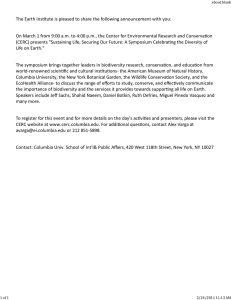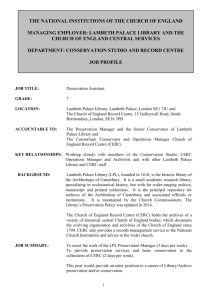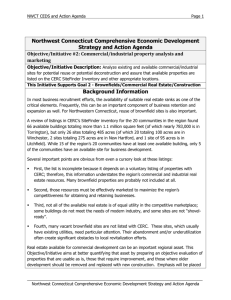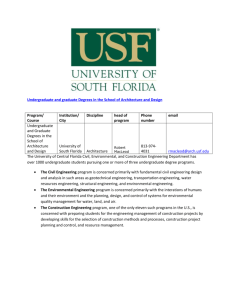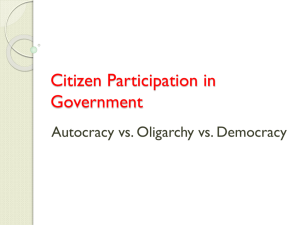U.S.-China Clean Energy Research Center (CERC) 7 Steering Committee Meeting – Summary
advertisement
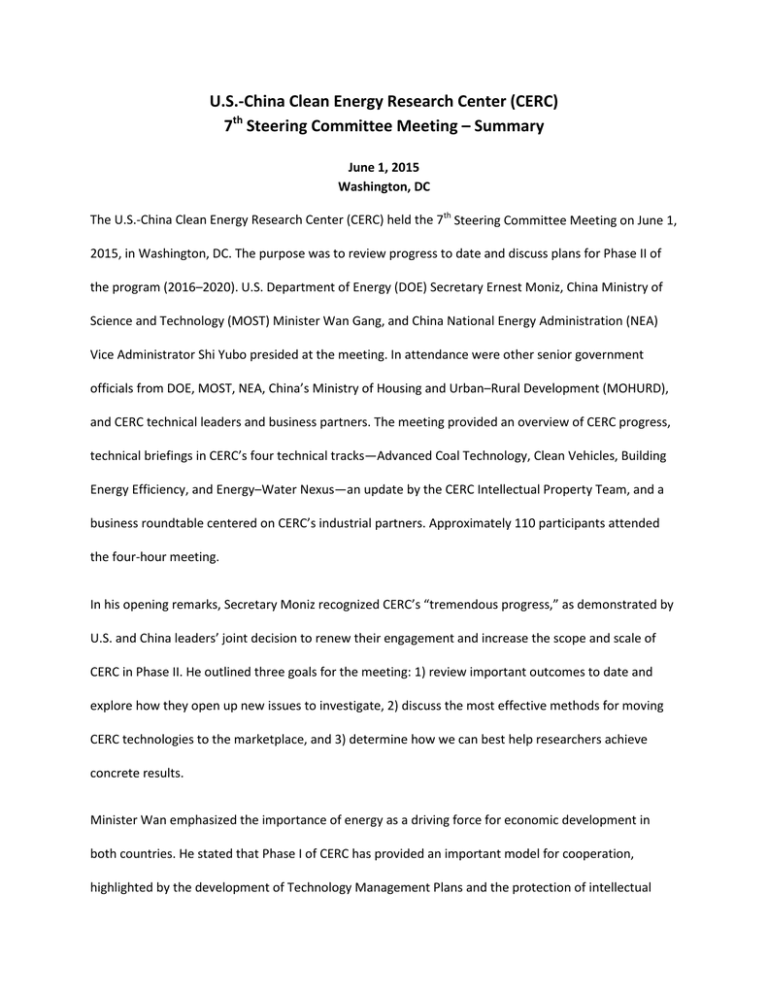
U.S.-China Clean Energy Research Center (CERC) 7th Steering Committee Meeting – Summary June 1, 2015 Washington, DC The U.S.-China Clean Energy Research Center (CERC) held the 7th Steering Committee Meeting on June 1, 2015, in Washington, DC. The purpose was to review progress to date and discuss plans for Phase II of the program (2016–2020). U.S. Department of Energy (DOE) Secretary Ernest Moniz, China Ministry of Science and Technology (MOST) Minister Wan Gang, and China National Energy Administration (NEA) Vice Administrator Shi Yubo presided at the meeting. In attendance were other senior government officials from DOE, MOST, NEA, China’s Ministry of Housing and Urban–Rural Development (MOHURD), and CERC technical leaders and business partners. The meeting provided an overview of CERC progress, technical briefings in CERC’s four technical tracks—Advanced Coal Technology, Clean Vehicles, Building Energy Efficiency, and Energy–Water Nexus—an update by the CERC Intellectual Property Team, and a business roundtable centered on CERC’s industrial partners. Approximately 110 participants attended the four-hour meeting. In his opening remarks, Secretary Moniz recognized CERC’s “tremendous progress,” as demonstrated by U.S. and China leaders’ joint decision to renew their engagement and increase the scope and scale of CERC in Phase II. He outlined three goals for the meeting: 1) review important outcomes to date and explore how they open up new issues to investigate, 2) discuss the most effective methods for moving CERC technologies to the marketplace, and 3) determine how we can best help researchers achieve concrete results. Minister Wan emphasized the importance of energy as a driving force for economic development in both countries. He stated that Phase I of CERC has provided an important model for cooperation, highlighted by the development of Technology Management Plans and the protection of intellectual property (IP). Phase II should strengthen IP support and ensure a clear direction is set that enables researchers to make more technological breakthroughs. Minister Wan indicated that China is undergoing reform in the area of science and technology, including the role of MOST. China is designing new plans and approaches using CERC as a centerpiece to ensure that CERC receives adequate funding. NEA Vice Administrator Shi reiterated the importance of CERC in developing advanced traditional and clean energy technology in both the United States and China. He noted that its work complemented NEA’s own priority to develop cleaner coal technology. U.S. CERC Director Bob Marlay of DOE and China CERC Director CAI Jianing of MOST delivered a joint presentation highlighting CERC’s structure, funding plan ($200 million over the next five years), research activities, early signs of success, and path forward. The directors underscored that CERC is a unique model, given its emphasis on IP and high-level governance from both countries. In Phase II, CERC should use the strong foundation set in the first phase to realize more practical outcomes with economic and social benefits. The directors stressed the importance of strengthening engagement with industry partners, focusing on fewer projects with greater impact, and developing roadmaps for measurable impacts by 2020. The co-leaders of the Advanced Coal Technology Consortium (ACTC) , Yao Qiang of Tsinghua University and James Wood of West Virginia University, highlighted Phase I achievements and presented planning for Phase II. They described research advancements in the consortium’s five thrust areas—advanced power generation, large-scale demonstration projects, CO2 utilization and storage, advanced coal conversion, and system analysis and modeling. They described ongoing and planned pilot projects in both the United States and China. The co-leaders of the Clean Vehicles Consortium (CVC), Ouyang Minggao of Tsinghua University and Huei Peng of the University of Michigan, presented on CVC’s ongoing and planned activities in six focus areas—advanced batteries systems, advanced biofuels and clean combustion, traction motor and control systems, lightweight structures and electric vehicle (EV) crash safety, vehicle–grid integration, and EV energy and system analysis. The leads presented technology and performance targets and milestones for 2016–2020. In Phase II, the U.S. CVC will be led by Argonne National Laboratory, with University of Michigan as a continuing partner. The co-leaders of the Building Energy Efficiency (BEE) consortium, Nan Zhou of Lawrence Berkeley National Laboratory and Liang Junqiang of MOHURD, discussed BEE research achievements and future plans. Key metrics were presented to demonstrate BEE accomplishments, including number of products launched; patents and invention disclosures; development of new standards, codes, and policies; and copyright software. The leads highlighted industry engagement and demonstration projects. The co-leaders of the Energy–Water Nexus track, Diana Bauer of DOE and Jia Yangwen of China’s Institute of Water Resources and Hydropower Research, provided an update for the preparatory work on the new CERC track since it was jointly announced in November 2014. The leads emphasized that energy–water is increasingly important in both countries. In the United States, DOE published a major energy–water nexus report, which provides a framework for research projects in this track. In China, the 13th five-year plan has a special chapter on energy–water. The leads anticipate completing the award process for identifying projects by the end of 2015 and beginning collaborative research in Spring of 2016. An update on IP was provided by Stacy Baird of the US–China Clean Energy Forum and Professor Yu Xiang of Huazhong University of Science and Technology. They announced the upcoming bilingual “Researcher’s Guide to IP and Technology Transfer” that is structured to help researchers protect and commercialize their inventions. Phase II will see the formation of an IP experts group, for which the U.S. and China has already assembled more than a dozen experts. Will Latta, from LP Amina, who worked under the CERC IP framework as an industry partner in ACTC, reiterated that CERC IP guidance was essential for providing a foundation for companies to come quickly to agreement on terms. He expressed hope that Phase II will include more large-scale commercialization projects based on CERCrelated IP which can serve as both exemplars and case studies. CERC business partners from ACTC, CVC, and BEE provided insights regarding their experiences with CERC. Speakers included representatives from Duke Energy, Jupiter Oxygen, Ford, Jing-Jin Electric, DENSO, UTC, Johnson Controls, Lutron, SageGlass, the Chinese Academy of Building Research, and Singyes Solar. Selected advantages of CERC that were noted by business partners included the ability to broaden relationships; better understand of country approaches and strategic drivers; opportunity for expanded work scopes; access to experts in academia and laboratories; flexibility with work plans; and improved access to reach both U.S. and Chinese markets. Examples of opportunities and challenges noted for CERC Phase II included adding industry participants—especially small innovation firms, conducting more technology demonstrations and commercialization efforts, identifying project directors with the right mix of skills, and working with different policy priorities in the two countries. In closing remarks, Minister Wan outlined four priority goals: 1) publicize accomplishments; 2) finalize goals of CERC Phase II; 3) attract more universities and research institutes; and 4) improve cooperation on IP. Vice Administrator SHI underscored the impressive successes presented at the meeting and expressed interest in seeing the workplans for Phase II. Secretary Moniz thanked the participants, particularly the Chinese leadership and industry partners for their continued commitment to the CERC approach for bilateral cooperation. He encouraged attendees to use the momentum from the Phase I to think about the potential influence of CERC beyond direct collaboration. CERC has already played a role in global climate conversations, and the opportunity exists to be an example in successful arrangements for developing clean energy solutions. He directed the CERC Secretariat to publish a report summarizing best practices from each technical track with an eye to broader adaption in other settings.
